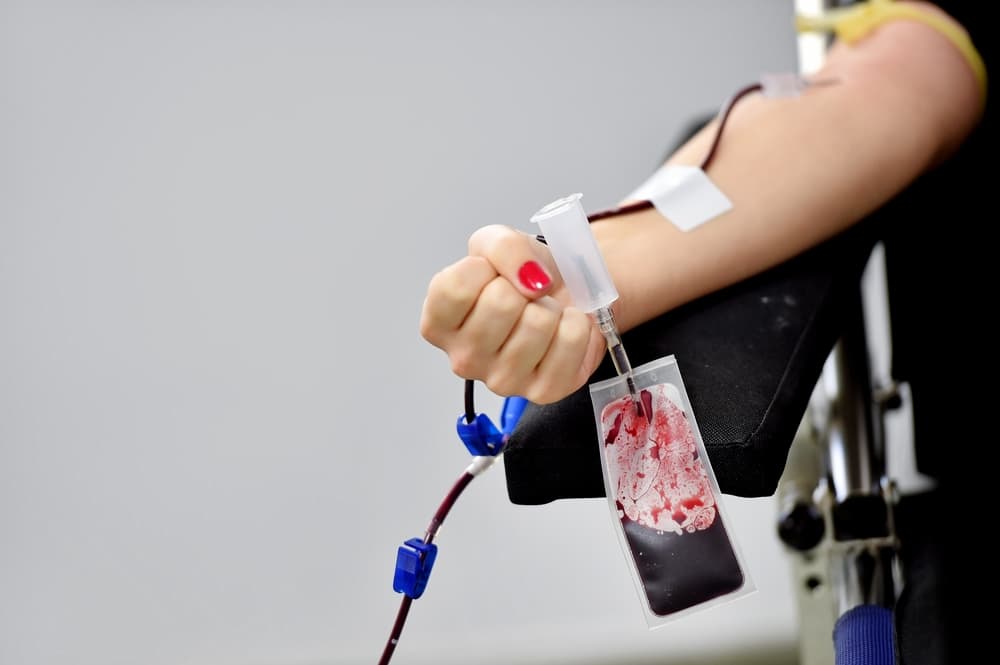Contents:
- Medical Video: CHEM 407 - Glycolysis - 4 - Aldolase Mechanism
- What should I know before undergoing aldolase?
Medical Video: CHEM 407 - Glycolysis - 4 - Aldolase Mechanism
Definition
What is aldolase?
Aldolase test is used to detect diseases of the liver and muscles.
Aldolase is an enzyme involved in the process of glycolysis or the breakdown of glucose into energy in the body. Aldolase is spread throughout all parts of the body. However, this enzyme is most commonly found in muscles and liver.
People with muscular dystrophy, dermatomyositis, and multi-muscle inflammation tend to have high aldolase levels. Aldolase levels can still be increased in muscular nacrosis patients, muscle injuries, and infectious diseases that spread in the muscles (eg taeniasolium). An increase in the amount of aldolase was found in patients who developed chronic hepatitis, biliary obstructive jaundice, and cirrhosis. In addition, this test is used to identify the cause of muscle weakness. Muscle disease can be detected through high levels of aldolase enzymes. Meanwhile, muscle weakness caused by neurological diseases such as polio, myasthenia gravis, and multiple sclerosis have normal levels of aldolase enzymes.
When should I undergo aldolase?
In general, this test is used to diagnose muscle and liver injuries. For example, if the heart muscle is damaged by a heart attack, the aldolase level will increase rapidly. Similarly, if you have cirrhosis.
But along with technological developments, this test was abandoned and replaced with more accurate tests such as creatine kinase, ALT, AST.
Prevention & warning
What should I know before undergoing aldolase?
Several factors can influence test results, including:
- muscle injection before the test can increase aldolase levels
- Intensive training can temporarily improve aldolase
- certain drugs can increase aldolase levels (eg liver toxins)
- certain drugs can reduce aldolase levels (eg phenothiazines)
Pay attention to warnings and precautions before undergoing this treatment. If you have questions, please consult a doctor for further information and instructions.
Process
What should I do before undergoing aldolase?
- for the best results, you are not advised to exercise intensely or do other physical activities before taking the test
- the doctor will ask you to limit physical activity a few days before the test
- make sure you tell your doctor about the medicines you are taking. Several types of drugs can affect the level of aldolase and make the test results inaccurate
- You are recommended to use short-sleeved clothing to make it easier to take blood samples from your hands
How is the aldolase process?
The medical personnel who are in charge of taking your blood will take the following steps:
- wrap an elastic belt around your upper arm to stop the blood flow. This makes the blood vessels under the bond enlarge making it easier to inject needles into the vessels
- clean the part to be injected with alcohol
- inject a needle into a vein. More than one needle may be needed.
- attach the tube to the syringe to fill it with blood
- remove the ties from your arms when taking blood is enough
- attach gauze or cotton to the injected part, after the injection is finished
- put pressure on the part and then put on a bandage
What should I do after undergoing aldolase?
Some people may feel pain when a syringe is inserted into the skin. But for most people, the pain will gradually disappear when the needle is right in the vein. Generally, the level of pain experienced depends on the expertise of the nurse, the condition of the arteries, and a person's sensitivity to pain.
After going through the process of taking blood, wrap your hands in a bandage. Press the vein slowly to stop bleeding. After doing the test, you can do activities as usual.
If you have questions about the test process, please consult a doctor for further instructions.
Explanation of Test Results
What do the test results mean?
Normal
Normal range:
- adults: 3-8.2 Sibley-Lehninger unit / dL or 22-59 mU / 37 ° C (SI unit)
- children: two times higher than the adult range
- baby: four times higher than the adult range
Abnormal
Aldolase increase is caused by:
- liver disease (for example, hepatitis)
- muscle disease (for example, muscular dystrophy, dermatomyositis, and multi-muscle inflammation)
- muscle injury
- muscle infection (for example, taeniasolium)
- necrosis process (for example, intestinal necrosis)
- coronary
The normal range for the aldolase test may vary depending on the laboratory you choose. Discuss with your doctor if there are questions about your test results.
Hello Health Group does not provide medical advice, diagnosis or treatment.











